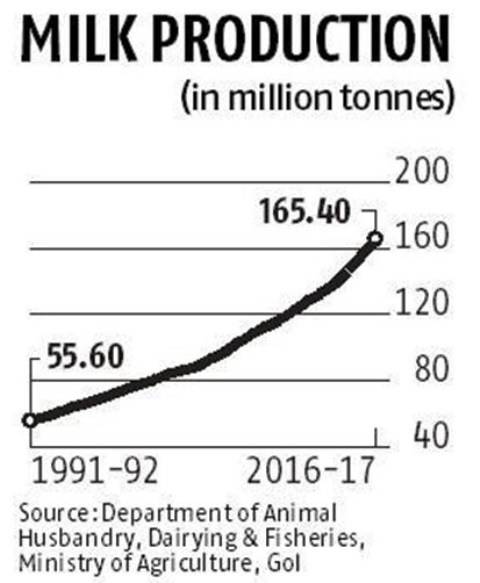
The new supply mode started in Andhra Pradesh, with dozens of farmers joining hands with Farmers Produce Organizations (FPOs) and tying up with HORECA chains in the vicinity, in order to get at least Rs 4-5 a litre more than the price paid by organized companies and bulk suppliers. With milk gradually getting oversupplied due to sustained increase in its production, organized companies have been paying Rs 21-22 a litre, which farmers feel is insufficient to cover the cost of production. HORECA chains, however, are offering Rs 24-25 a litre through direct procurement from farmers.
The Rs 6,000-billion dairy industry in India has gone through a dramatic shift in milk supply over the past few months, with farmers initiating direct supply to retailers and bulk consumers to fetch better realization, instead of supplying to organized collection centres under a corporate brand.

Targeting mainly the hotels, restaurants and catering (HORECA) segment, the new system of milk supply is posing a big threat to dairy companies over milk availability during the short term and sustained supply for future projects.
"The management of Heritage Foods said in an analyst meet that lower milk prices are expected to boost margins of milk-processing companies. However, many farmers/agents have started selling excess milk directly in cities without any processing. They are targeting the HORECA segment and also selling milk to small tea stalls, thereby posing a threat to organized players," said Aniruddha Joshi, an analyst with ICICI Securities.
Companies see two options before them to tackle this problem.

Either to reduce milk selling prices and pass on some benefits to distributors and HORECA consumers or expand the margins with lower sales volumes. "Heritage plans to take a middle path and ensure healthy revenue growth with some expansion in margins," said Joshi of ICICI Securities.
A recent Rabobank report puts India's milk production at 180 million tonnes by 2019, from 165.4 million tonnes for financial year 2017. Milk production in India has increased with a CAGR of 4.9 percent over the past decade due to higher bovine output, low feed prices and sustained increase in demand.
Devika Malik, an analyst with India Ratings & Research, sees India's milk production rising by 6.29 percent y-o-y to expand the size of liquid milk industry to Rs 7.45 trillion during 2019 due to sustained low fodder / cattle feed prices.

Nidhi Agrawal of Angel Broking feels companies with value-added products, such as Parag Milk Foods, would post better top lines and bottom lines in the coming quarters. "Driven by rising awareness, new product launches, aggressive marketing (by leading players) and income level, organized players' share is expected to rise to 26 percent by 2020 from the existing 22 percent. Parag with leading Go and Gowardhan brands of dairy products, is likely to be a key beneficiary of this shift," Agarwal said.
In India, over 80 percent of milk is consumed in liquid form, as opposed to developed countries where that a large portion of milk is in the form of value added-dairy products. Most dairy companies, therefore, plans to boost their forward or backward integration businesses to post better margins.















